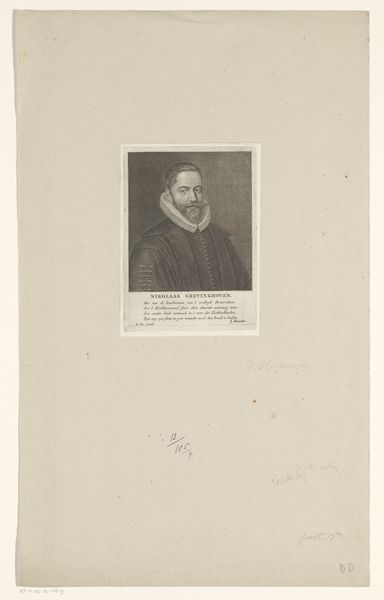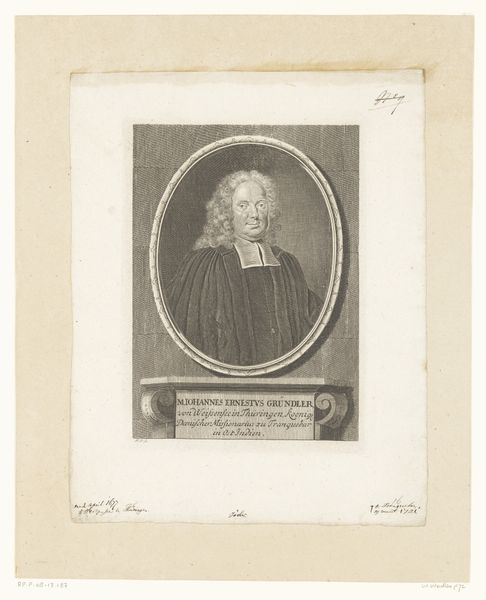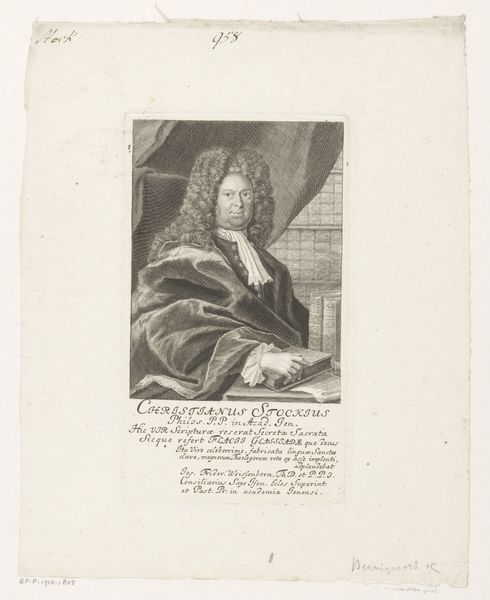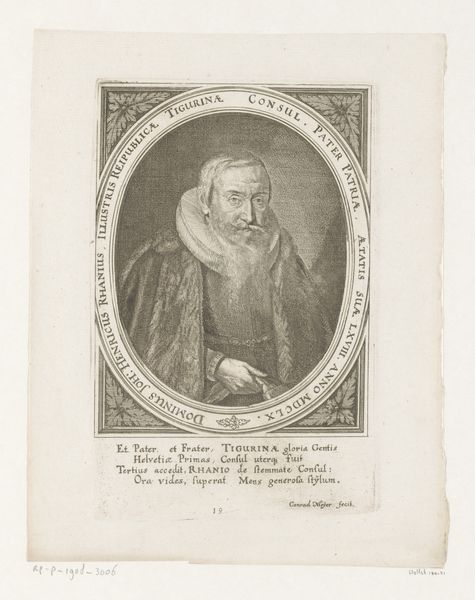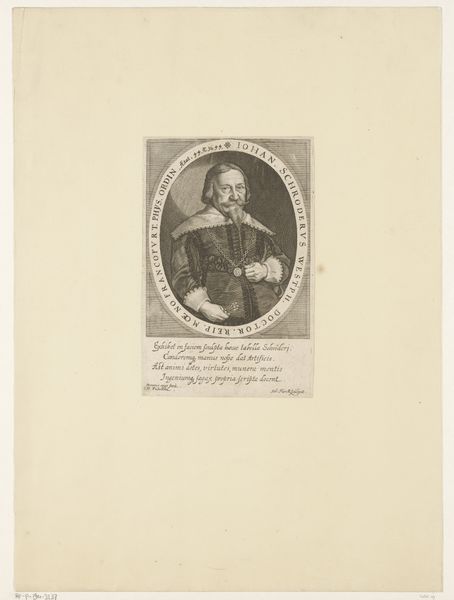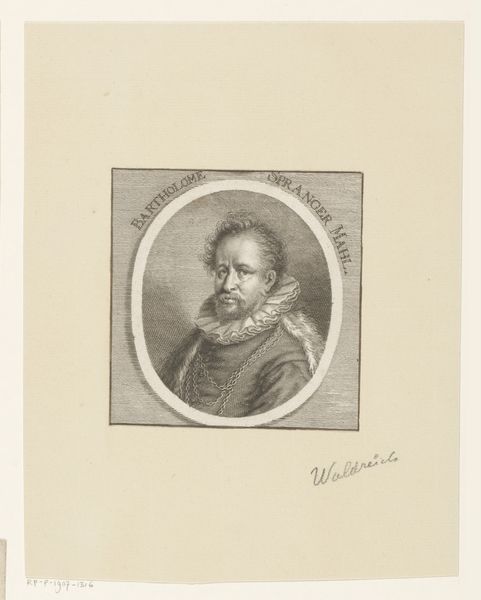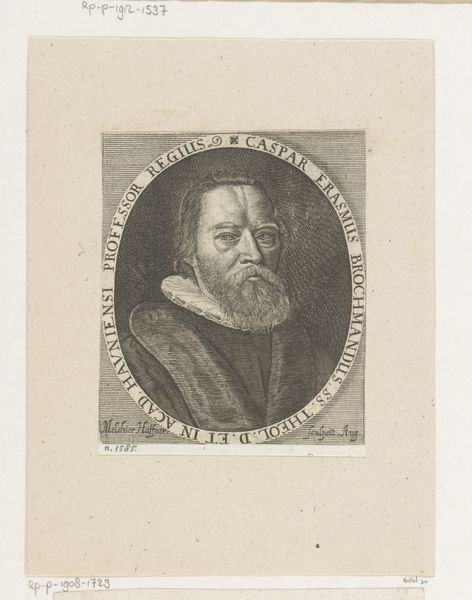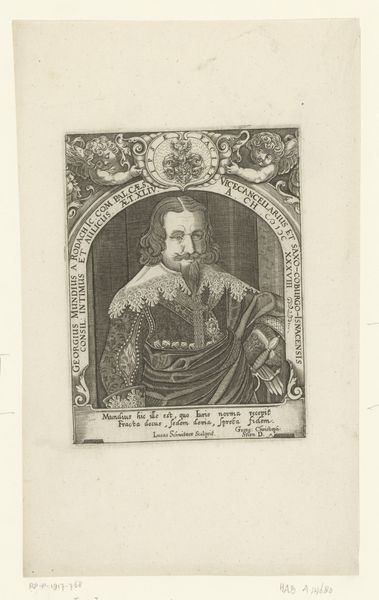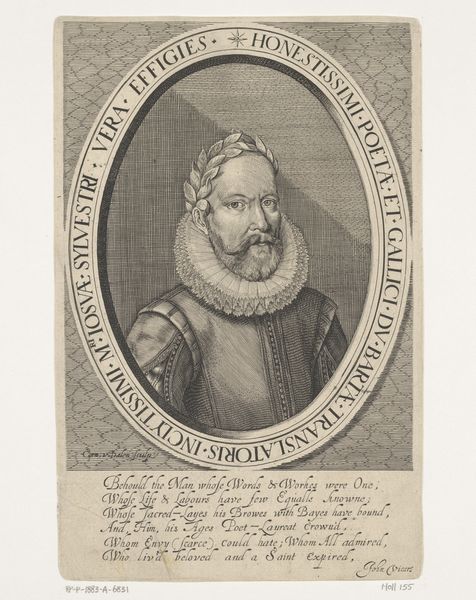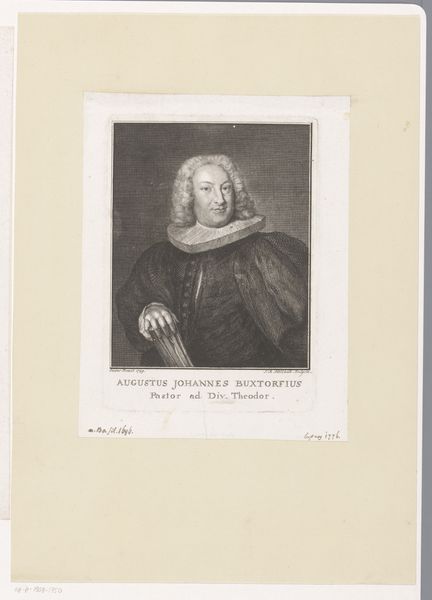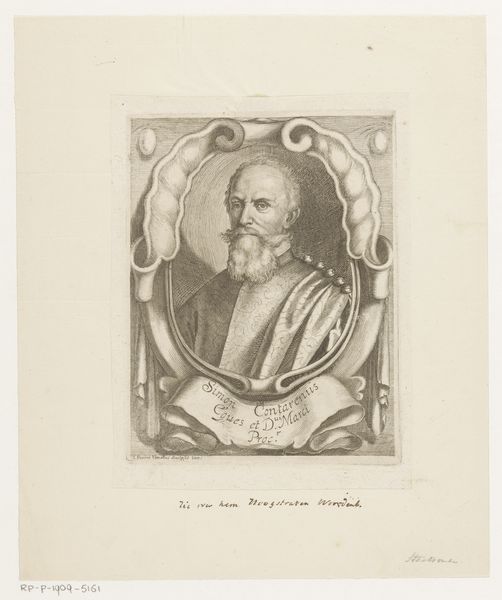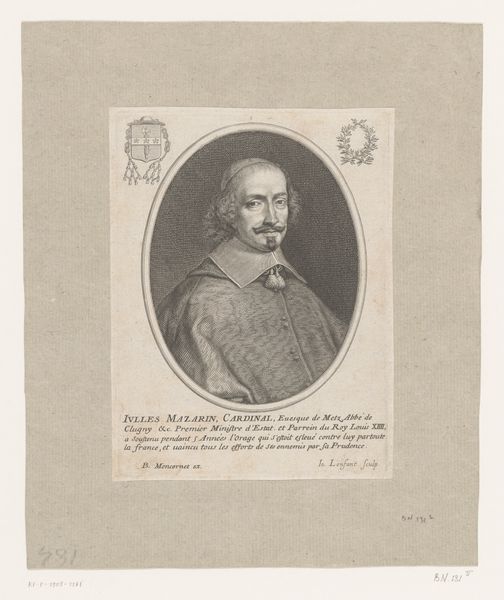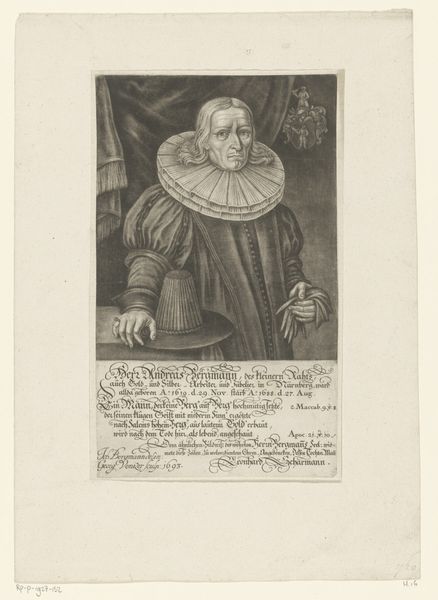
print, paper, ink, engraving
#
portrait
#
baroque
#
dutch-golden-age
# print
#
old engraving style
#
paper
#
ink
#
engraving
Dimensions: height 169 mm, width 122 mm
Copyright: Rijks Museum: Open Domain
Curator: Let's turn our attention to this engraving, a "Portret van Gerardus Joannes Vossius," created in 1704 by Pieter Sluyter. It’s part of the Rijksmuseum's collection. What's your initial response to it? Editor: Stark. There’s an austerity to it, a deliberate lack of embellishment save for that imposing ruff. The hatching feels tight, controlled...almost academic. Curator: Indeed. Sluyter, working within the Dutch Golden Age tradition, uses ink on paper to present Vossius, a prominent classical scholar. What strikes me is how the engraving technique—the precise lines and their varying density—creates a strong sense of volume and texture, particularly in the rendering of the face and the scholar's attire. Editor: I am curious about that austerity though. Is it simply stylistic? Or does it tell us something about Vossius's position, the role of intellectuals, or even the very act of portraiture at that time? Was this meant as a statement about his gravitas or a more general statement on the intellectual climate of the era? Curator: It is both. Certainly, there’s an element of conveying status. Engraved portraits like these were often commissioned to disseminate images of important figures, serving as a form of visual record and public memorial. However, that very careful rendering suggests Sluyter aimed to create a likeness that reflected Vossius's intellectual rigor. Note how the eyes, though small, seem to hold a sharp intensity. The formal approach adds weight to the sitter and emphasizes decorum. Editor: That reminds me of the debate about image distribution back then. These engravings made portraits more accessible, challenging the power held by those who commissioned paintings. Could Sluyter, by making and distributing this engraving, have contributed to a democratization of the image of Vossius? Curator: Intriguing perspective. These printed images circulated amongst a broader segment of society. And so, yes, they possessed the potential to reshape public perception and introduce greater numbers of people to the realm of academic accomplishment and influence. Editor: It prompts you to reflect on the power structures inherent in art, doesn't it? Both then and now. Curator: Absolutely. Thinking about how it engages the viewer across time definitely enhances my perception of Sluyter's portrait. Editor: Yes, it deepens mine as well, particularly regarding the role such portraits play in constructing cultural memory.
Comments
No comments
Be the first to comment and join the conversation on the ultimate creative platform.
